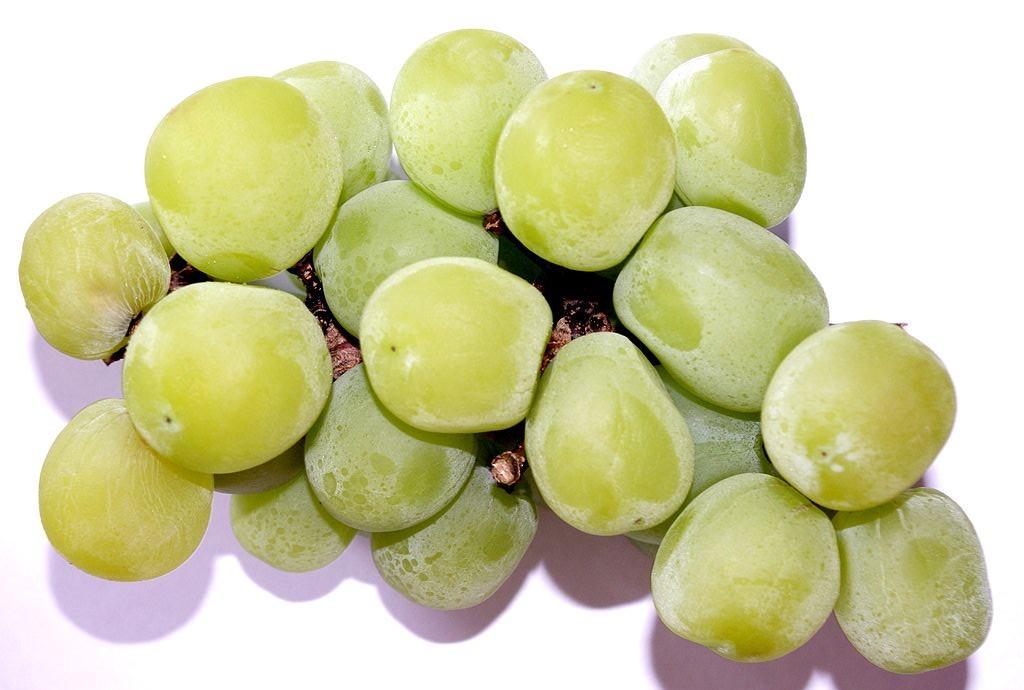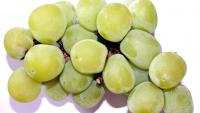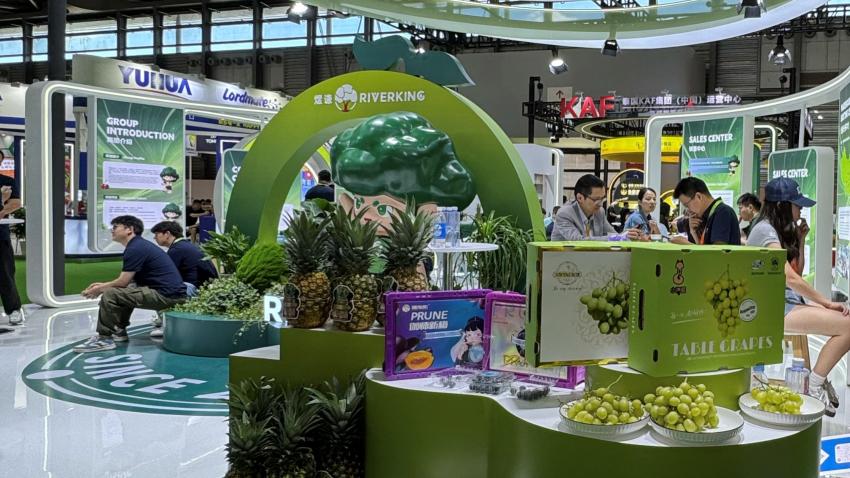You are here
Back to topShine Muscat Grapes Decline After Hot Start in China Market

Shine Muscat grapes have achieved a surprisingly high level of name recognition in China. Once considered to be the highest profit margin grape at 240 yuan ($33.70) per kilogram, the price is now around 20-40 yuan ($2.80-5.60) per kilogram. In Shaanxi province, Shine Muscat grapes are selling at the extremely low price of eight yuan ($1.12) per kilogram. What happened? And will the price of Shine Muscat grapes continue to decline in China?
In 2017, land area for growing Shine Muscat grapes expanded rapidly in response to the variety’s popularity and advances in cultivation technology. In 2018, more than two million Shine Muscat seedlings were sold in China. In Yunnan province alone, land area for growing the variety was estimated to have reached 300,000 mu (49,421 acres). According to projections, if another 10 million Shine Muscat seedlings are sold in the latter half of this year, the variety would account for one-tenth of China’s grape production area in 2020.
However, oversupply, production inefficiencies, and premature harvesting have led to declines in the variety’s popularity and price.
The Shine Muscat grape is labor intensive to grow and requires extensive pruning and trimming to achieve optimal quality. In general, one mu (0.1647 acres) of land should yield approximately 1,000-3,000 kilograms of grapes. Nevertheless, Chinese grape farmers typically aim to produce 2,000-2,500 kilograms per mu, while some shoot for 3,000-4,000 kilograms per mu. This is often achieved by excessive application of chemical fertilizers. While grape clusters weighing as much as 1-1.5 kilograms are achieved, these come at the cost of fragrance, texture, and flavor. To make matters worse, the grapes are often harvest before fully ripe in an effort to reach the market early.
The lower quality grapes are invariably met with lower market demand, and the result is oversupply, depressed prices, and market contraction—a common cycle in China’s highly fragmented agricultural markets.
The Shine Muscat grape was originally developed at the Fruit Science Research Institute of Japan and introduce to China in 2006. However, it took several years before Chinese producers were able to get a handle on the variety’s unique growing requirements. It wasn’t until 2015 that domestic producers began to achieve success with the variety, a time that coincided with rising interest from Chinese consumers exposed to imported Shine Muscat grapes.
As the variety’s popularity declines, rapid growth of imported Australian table grapes in China may pose an additional challenge to the Muscat Shine—although the Muscat Shine’s disease resistance, transport durability, and long growing season could allow its price to rise again.
This is an edited, translated version of an article that originally appeared in Chinese. Read the original article here.
Image: Wikimedia Commons












